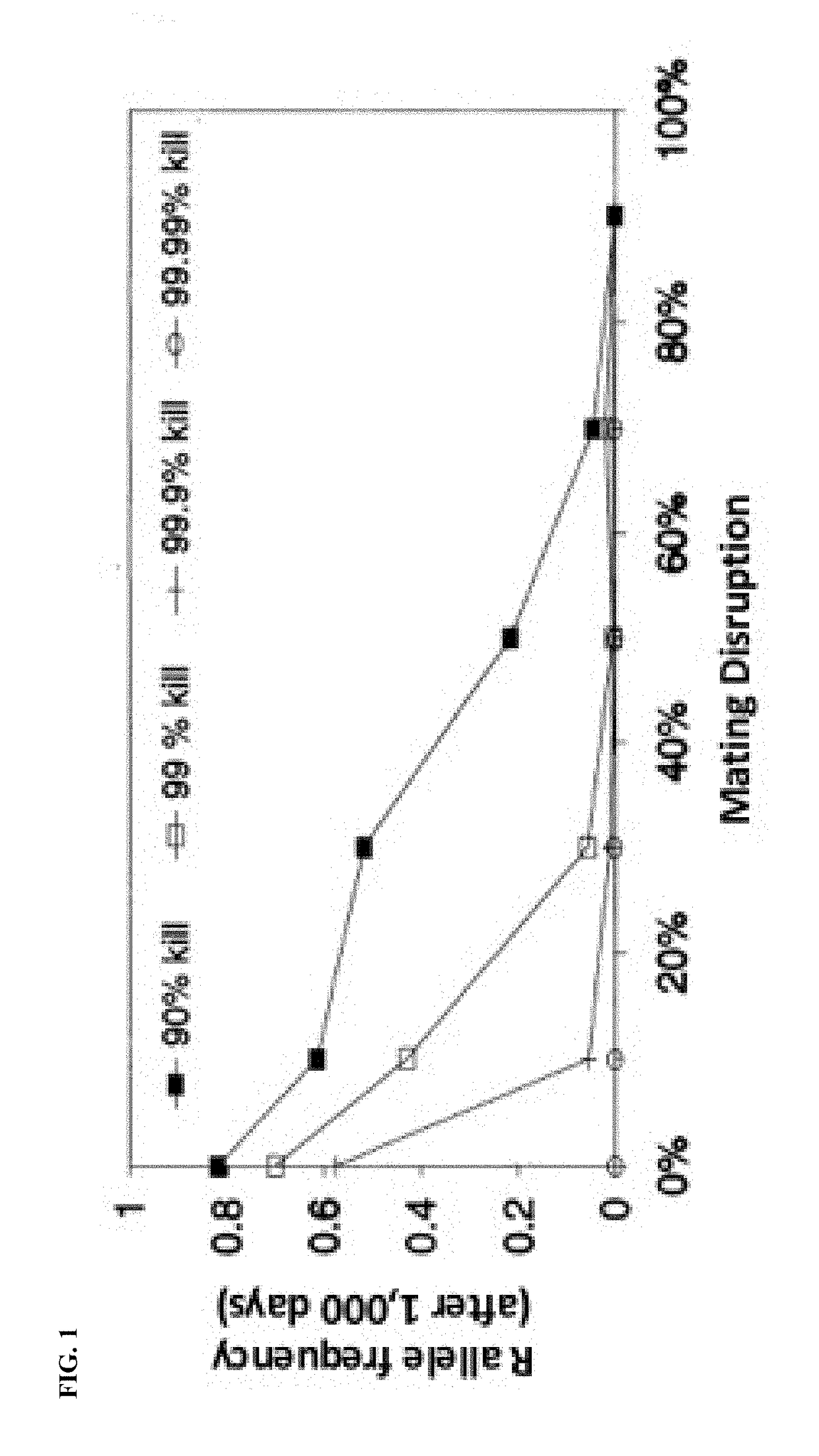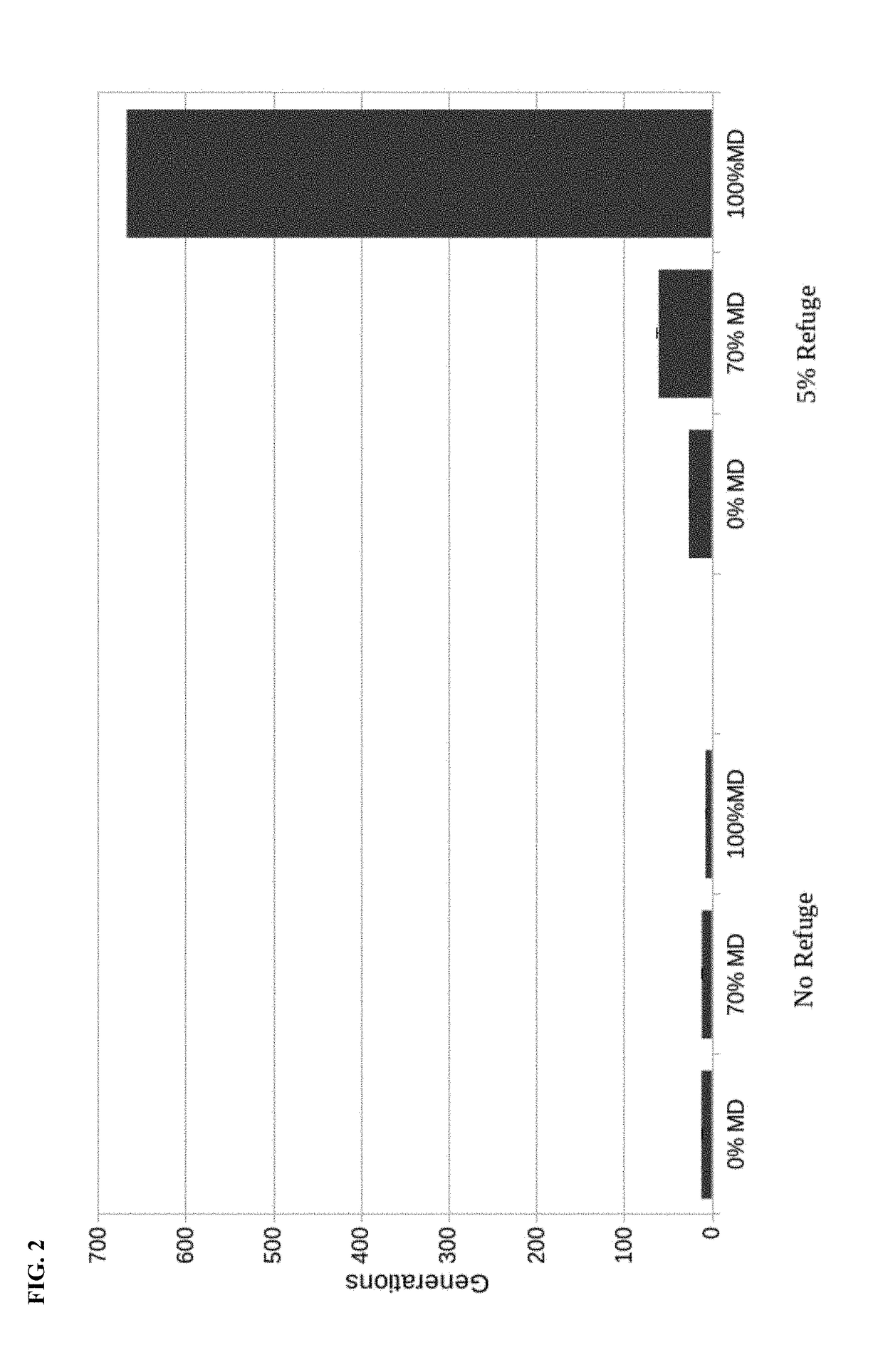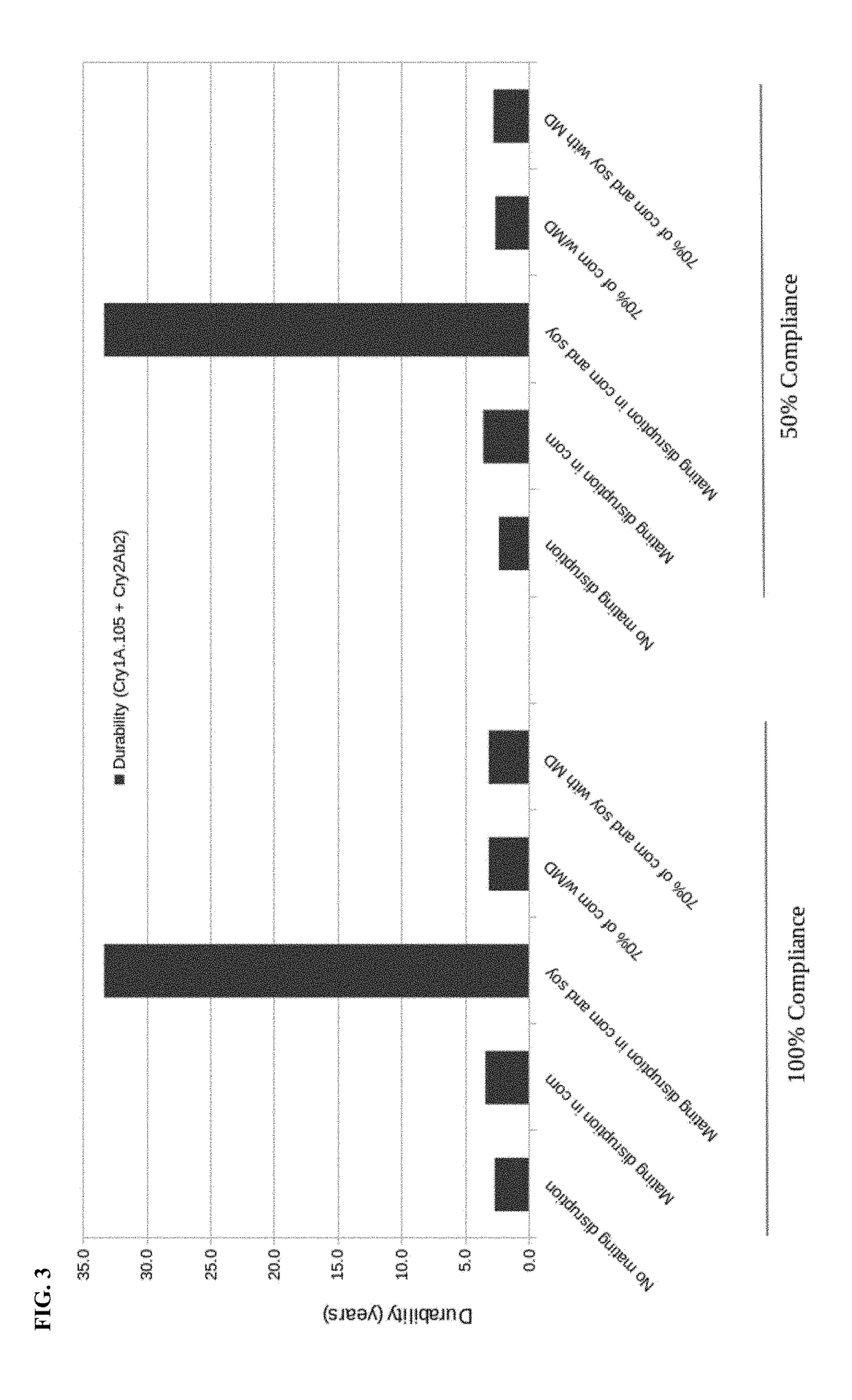Method for managing resistance to insecticidal traits and chemicals using pheromones
- Summary
- Abstract
- Description
- Claims
- Application Information
AI Technical Summary
Benefits of technology
Problems solved by technology
Method used
Image
Examples
example 1
[0350]Lab experiment: Show that RR and RS individuals are as attracted to the pheromone as SS individuals.
[0351]Without DNA-based screening methods, the genotype of sampled moths (collected from eggs) can be determined based on differences in their mortality, growth inhibition, and total fecundity when reared on artificial diets laced with the resisted insecticidal toxin (as in Bernardi et al. Cross-Resistance between Cry1 Proteins in Fall Armyworm (Spodoptera frugiperda) May Affect the Durability of Current Pyramided Bt Maize Hybrids in Brazil, PLoS ONE 10(10): e0140130 (2015)). Wild-caught adults will be reared in the lab to produce susceptible (SS) and resistant (RR) strains. The heterozygous strain will be obtained by reciprocal crosses between these RR and SS strains. Exposing these genotypes to certain concentrations of Cry1A (for example) and quantifying their survivability will establish a diagnostic threshold (resistant ratio) by which to determine the genotype of experimen...
example 2
[0352]Cage and field experiment: Show that mating disruption dose is independent of genotype.
[0353]The genotypes characterized in Example 1 will be released in the field for mating disruption experiments. The goal is to show that the pheromone dose required to achieve trap-catch shutdown, i.e. 100% mating disruption, is the same for RR, RS and SS genotypes.
example 3
[0354]Field experiment to show trait rescue: responsive strategy.
[0355]In an area where resistance is well established, the responsive strategies described above will be used across multiple crop cycles in order to rescue a transgenic or chemical insecticide. Year-round sites are preferred in order to enable sequential crop cycles.
[0356]Mathematical models will be used to model all variables and scenarios described above before going to the field in order to shortlist key variables and thus zoom into the key experiments.
PUM
 Login to View More
Login to View More Abstract
Description
Claims
Application Information
 Login to View More
Login to View More - R&D
- Intellectual Property
- Life Sciences
- Materials
- Tech Scout
- Unparalleled Data Quality
- Higher Quality Content
- 60% Fewer Hallucinations
Browse by: Latest US Patents, China's latest patents, Technical Efficacy Thesaurus, Application Domain, Technology Topic, Popular Technical Reports.
© 2025 PatSnap. All rights reserved.Legal|Privacy policy|Modern Slavery Act Transparency Statement|Sitemap|About US| Contact US: help@patsnap.com



